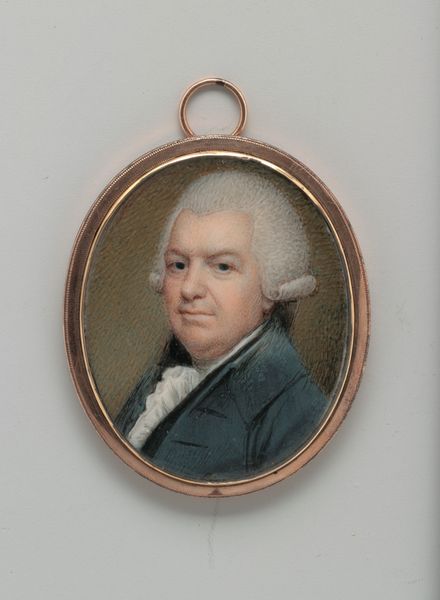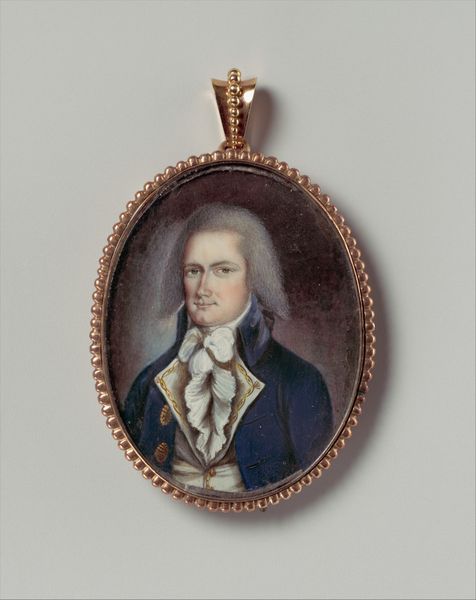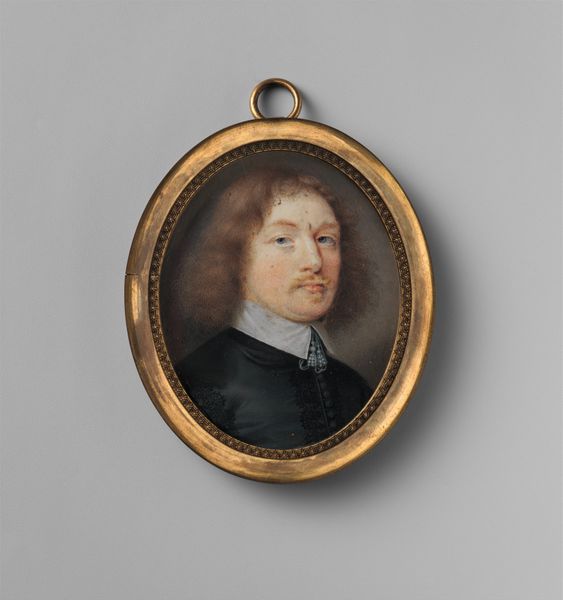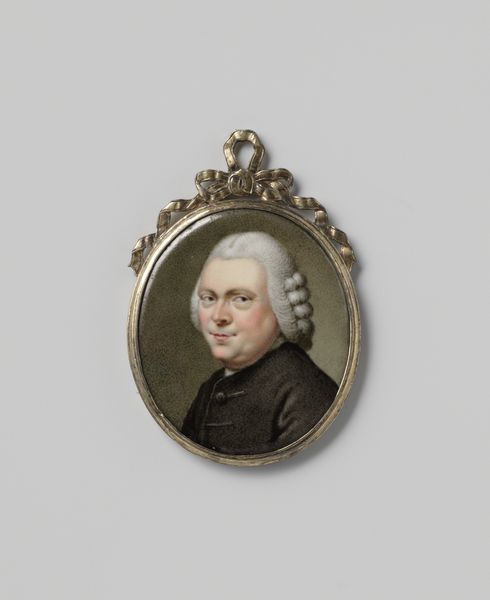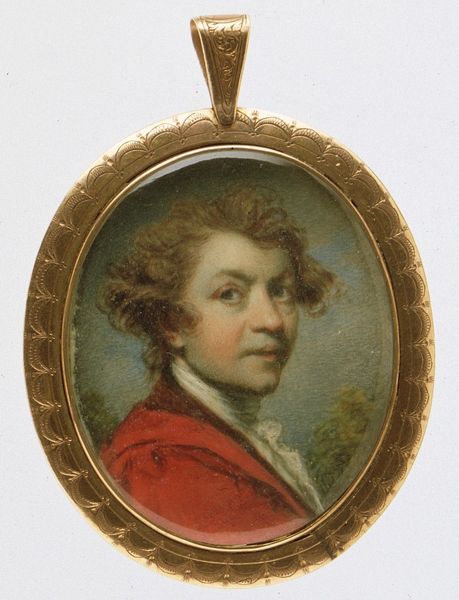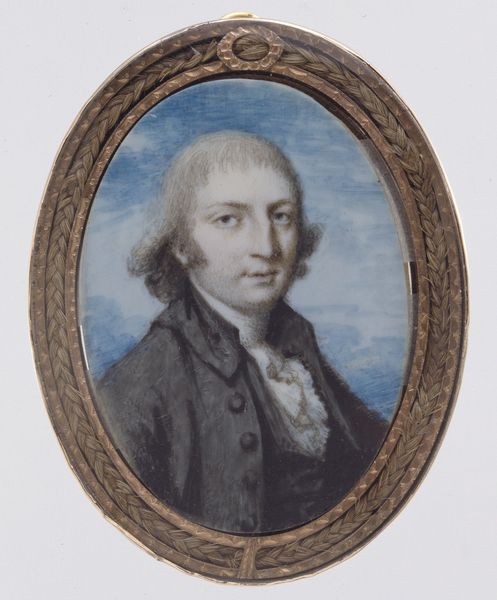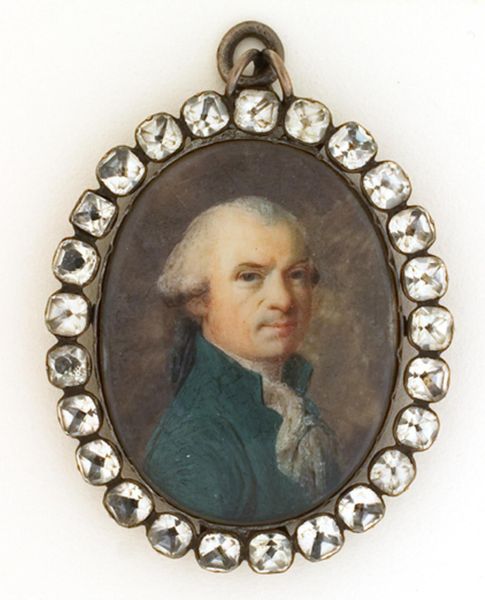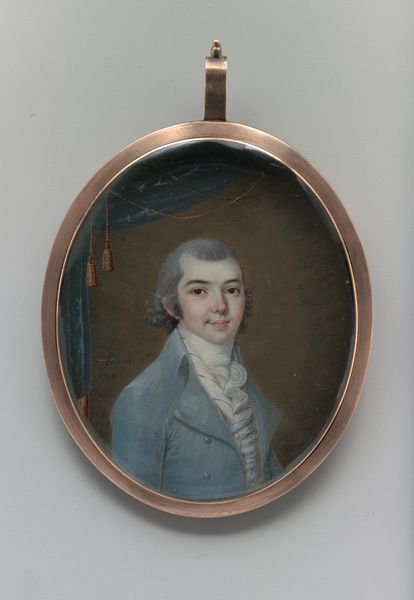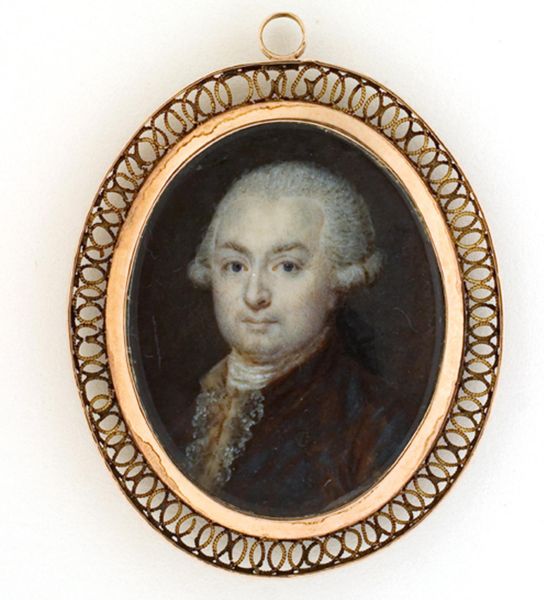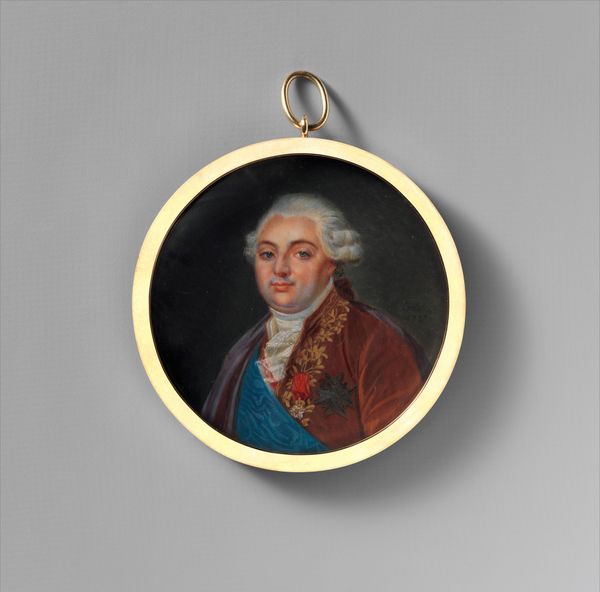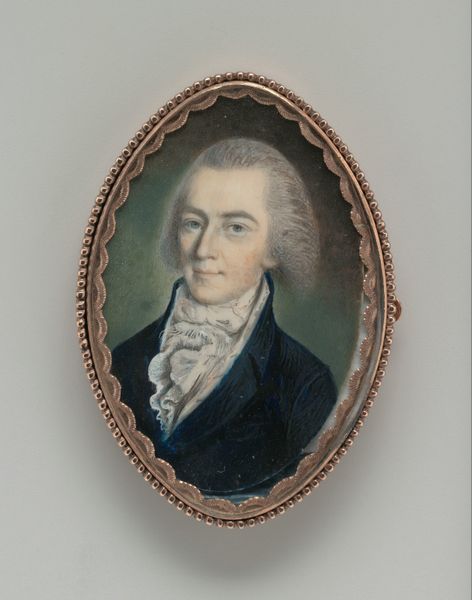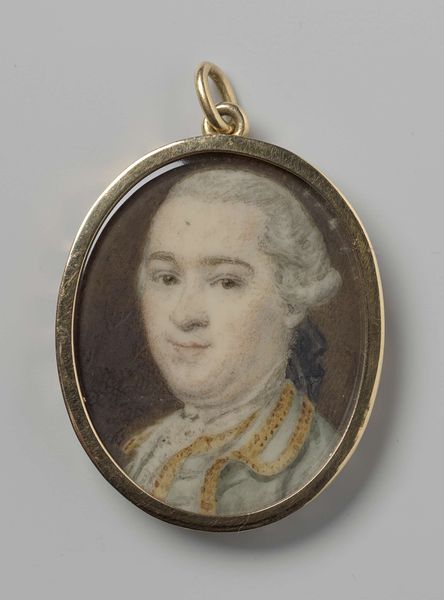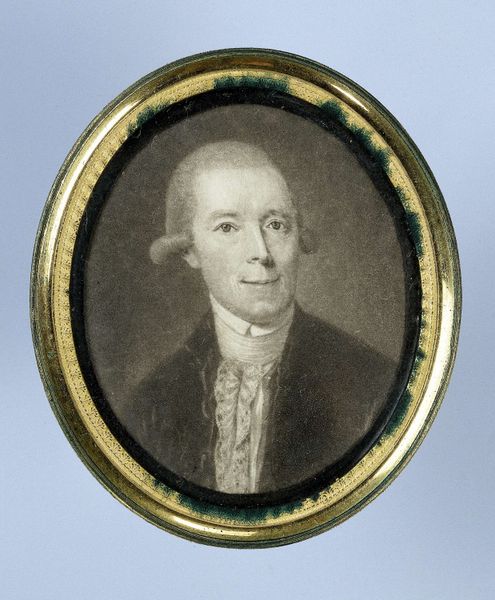
painting
#
portrait
#
neoclassicism
#
painting
#
intimism
#
miniature
Dimensions: 1 1/2 x 1 in. (3.9 x 2.5 cm)
Copyright: Public Domain
Curator: Before us, we have "Portrait of a Gentleman" by Henry Benbridge, painted around 1777 to 1780. Its medium is listed as painting. Editor: My first impression is of understated elegance. It's a restrained portrait, almost… secretive. The frame enhances that sense, giving it a keepsake-like quality. Curator: Yes, it’s an intimate depiction. The Neoclassical style evident in the sitter's attire and the softened light speaks to a particular era. Notice the precision and balance in the composition, directing our gaze straight to the subject's face. Editor: Indeed, but let's consider the social context. Miniature portraits were often commissioned within affluent circles as tokens of affection or remembrance. The subject's slightly averted gaze could represent both a personal reservation and a social deference. Who did this man represent in colonial society, and how did he engage with revolution on the horizon? Curator: True, and beyond social standing, the artist uses light to sculpt the gentleman’s face, enhancing his features and subtly communicating character. There is an idealized naturalism. Editor: But it’s an ideal constructed within the bounds of gender and class. Who were considered gentlemen in the late 18th century, and who was excluded? Did Benbridge intend to create a conversation around evolving power dynamics or did he just reflect status? Curator: That’s a valid point. It would require digging through the social history of Colonial-era gentry. Ultimately, Benbridge presents a sophisticated display of artistry, and it’s impossible not to notice the execution here in terms of form and composition. Editor: Of course, we must recognize that aesthetic decisions—such as posing or dress codes—do carry political undertones. To engage with art critically involves recognizing the web of power relationships it inhabits. Curator: Thank you. This nuanced reading provides greater understanding, I agree. Editor: It’s vital we never shy away from complex dialogues about art.
Comments
No comments
Be the first to comment and join the conversation on the ultimate creative platform.
